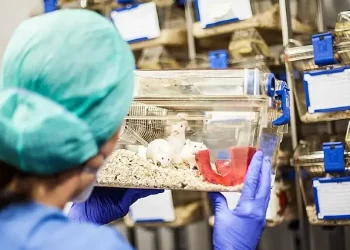Once a thriving community of hundreds of breeding pairs, the common tern colony in Lancashire’s Lune Estuary had completely vanished by 2008. Now, in a collaborative effort to reverse this decline, environmental organizations across the North West have joined forces to build what they’re calling a “raft of hope” for these endangered seabirds.
Natural England, alongside key partners including the Environment Agency, Fylde Bird Club, and Lancaster University, has embarked on an ambitious project to welcome these graceful birds – affectionately known as ‘sea-swallows’ – back to their former breeding grounds near Lancaster and Morecambe.
A Timeline of Decline and Recovery
The project’s evolution reflects both the challenges and opportunities in wildlife conservation:
| Period | Key Development |
|---|---|
| Pre-2008 | Several hundred breeding pairs present |
| 2008 | Complete colony disappearance |
| 2021 | First floating pontoon installed |
| 2022 | Second raft added |
| 2024 | Third raft launched with 64% increase in fledglings |
Multiple Threats, Innovative Solutions
The decline of common terns in the area was attributed to several factors:
- Primary Challenges:
- Habitat loss
- Human disturbance
- Food scarcity
- Increased predator threats
- Conservation Responses:
- Installation of adapted floating pontoons
- Reprofiling of islands and channels
- Repair of tidal sluice
- Creation of protected nesting spaces
Building Back Better
On November 19, 2024, the latest chapter in this recovery story unfolded as volunteers from multiple organizations gathered to construct and launch a third purpose-built nesting raft. “This project represents a significant step in our efforts to support the recovery of common tern populations in the Lune Estuary,” explains Mandy Knott, Nature Recovery Network Senior Officer for Natural England.
Howard Stockdale, an RSPB Volunteer, adds: “As a conservation initiative, the use of the rafts at the pool has proven to be the correct solution in allowing the colony to grow. 2024 saw the highest number of fledged common tern chicks with a 64% increase compared to 2023.”
Scientific Impact and Monitoring
The project serves both conservation and research purposes. Dr. Ian Hartley from Lancaster University’s Environment Centre notes: “The breeding rafts provide an ideal opportunity to closely monitor the nests with minimal disturbance – so these birds make significant contributions to both their own conservation and our science.”
Community Benefits
Paul Ellis, Secretary at Fylde Bird Club, emphasizes the broader impact: “Conder Pool is an undisturbed lake with islands, which is close to the coast. It’s also a great place for birds and is popular with people visiting to see its wildlife. The new tern raft will enhance its appeal to both the birds and the bird watchers.”
Visitors can observe these remarkable birds from the designated viewing area behind the screen next to the lay-by on the B5290. Natural England continues to monitor the site and may create additional nesting islands if the project’s success continues.
For more information about the common tern recovery project and visiting opportunities, visit Natural England’s website at www.gov.uk/natural-england.
Sources: THX News & Natural England.









